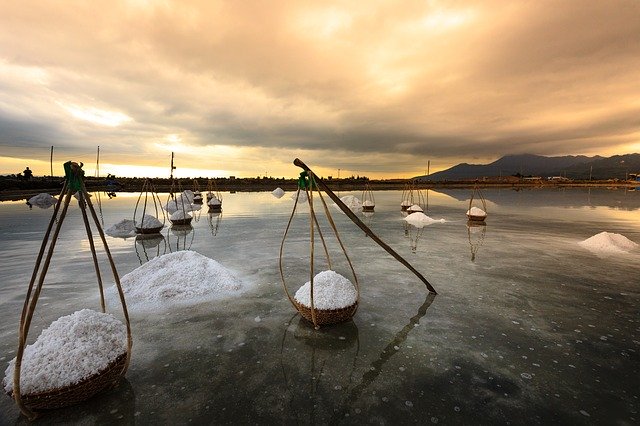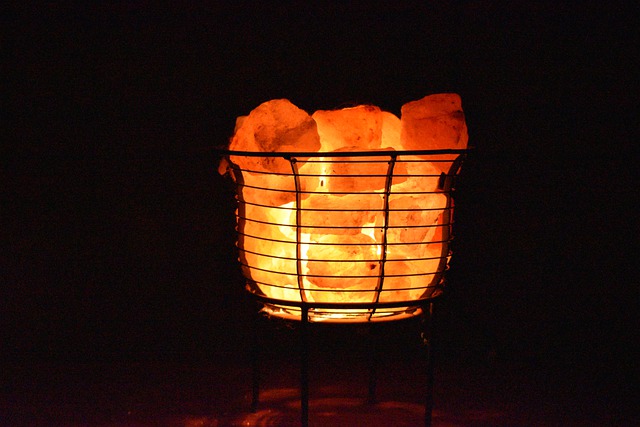
Himalayan Pink Salt – Is It Really A Big Deal?
I have heard time and again people telling me they use Himalayan pink salt (Saindhava Lavana) as it is ‘healthier’. I personally have never used the salt, having mostly utilised table salt in our cooked food at home.
I thought I would take a look at Himalayan pink salt, what the benefits really are, and whether it is worth shifting to this salt when cooking food at our home.
I looked through Google Scholar, authority sites and Pubmed for any available evidence. I was tremendously disappointed at the lack of any scientific publications looking at it’s true benefits.
This notwithstanding, here is what I have learnt.
A Brief Review Of History Of Salt
Years ago, salt was a highly valued commodity. It was a part of development of numerous civilizations, including the Roman, Greeks and the Chinese. In fact, the Romans built roads so that salt could be transported faster into the city. Salt was even used as wages for Roman soldiers.
What Is Salt?
When we talk of salt, we are essentially talking about sodium chloride, or NaCl. Traditionally, salt that was available contained 40% sodium and 60% chloride in it. This was the purest form of salt.
We need salt to live. Sodium is needed to regulate vital organ function, especially brain function. Those low in sodium tend to be tired and even confused. I have encountered multiple cases of coma due to low blood sodium levels over the years.

The table salt we purchase from the shops contains sodium chloride in addition to anti-caking agents (such as iodine, sodium silicates, aluminium ferrocyanide and sodium ferrocyanide – dont’ worry, all legal!) that prevent the salt from holding onto water and forming clumps.
Iodine is added to prevent thyroid disease. Years ago, thyroid disease (goitre) was common in people who had low iodine intake. The Salt iodisation program evolved from a study conducted by Professor V Ramalingaswamy in the Kangra Valley of Himachal Pradesh back in the 1950s.
There are numerous types of salt available other than the regular table salt. Himalayan pink salt is one of them. Others include rock salt, Indian black salt (kala namak), Maldon salt, Kilauea Black salt, Bolivian Rose salt and many others.
Let’s talk about Himalayan Pink salt.
What Is Himalayan Pink Salt?
Himalayan pink salt is a variety of salt that is mined from the Khewra Salt Mine, located at the foothills of the Himalayas within Pakistan (well, in between Islamabad and Lahore). The mining process preserves most of the minerals and trace elements within the salt.

It is pink in color because of the small amount of iron oxide (rust) that it contains.
In addition to this, it contains a wide variety of minerals within it (apparently 84 different minerals and trace elements), making it ‘more nutritious’ compared to the regular table salt we use in cooking.
Pink salt has been heralded as a ‘health food’ with multiple benefits by not just companies manufacturing the product, but also by celebrities and influencers globally.
But is it really so?
Nutritional Content Of Himalayan Pink Salt
If you look at the nutritional content of Himalayan Pink salt, it contains slightly higher quantities of calcium, potassium, magnesium, iron and molybdenum compared to table salt. It only has a marginally lower level of sodium.
In fact, the total content of sodium in pink salt is 98%. Only 2% are the trace minerals I have mentioned above.
Given that it is mined in a special way and does not require any additives, it makes it a little healthier compared to table salt.
Any True Benefits Of Himalayan Pink Salt?
Let’s take a look at a few aspects
Sodium Content
The main concern with any salt is sodium content. It is well known that a high intake of sodium on a regular basis can lead to high blood pressure.
In those people taking medical treatment for high blood pressure, a high intake of sodium can worsen blood pressure and lead to poor control. This increases the risk of heart attacks and strokes.
There is no significant difference between the sodium content of table salt and pink salt. One gram of table salt has 381 mg of sodium, while 1 gram of pink salt has 368 mg of sodium.
That’s a small difference.
On the other hand, the potassium content of pink salt is 3 times higher than table salt.
So if you are looking to use Himalayan pink salt as a replacement for table salt, think again. The sodium content is only slightly lesser in the former, and you may need to add a little more pink salt to your food to get the same taste as table salt.
Also, if you have hypertension, I recommend avoiding pink salt. This is because it too contains harmful sodium, and the potassium levels are higher. Certain medicines prescribed for high blood pressure cause retention of potassium, so consuming pink salt can only add insult to injury. Follow a low salt diet instead.
Iodine Content
As I mentioned earlier, iodine is essential to maintain healthy thyroid function. Iodine is available in dairy, fish and eggs.
Pink salt has very little if no iodine in it, making it less healthy compared to iodised table salt.
Additional Minerals And Trace Elements
It is believed that there are 84 additional minerals and trace elements in pink salt compared to table salt.
But the quantities of these minerals is so small, it is unlikely to have any benefit on your health whatsoever. In fact, to truly obtain any benefit, you might need to consume a kilo of pink salt daily!
Cost
This may not be too relevant, but pink salt is considerably more expensive compared to iodised table salt.
Not something you want to pass around liberally at the dinner table.
Additives
Himalayan pink salt has no additives, and is purely natural. On the other hand, table salt has anti-caking agents to prevent it from forming clumps.
There is no evidence that these anti-caking agents are harmful in any way to humans. If you feel seriously about it, then you can make the switch to pink salt. Just make sure you get your iodine from elsewhere.
Himalayan Pink Salt Lamps

So I found that they are using pink salt in lamps, as they have a soothing effect on the body and mind. It supposedly helps treat seasonal affective disorder, increase energy levels and improve sleep.
It is believed to do so by releasing negative ions into the air, getting rid of ‘harmful positive ions’. There is some understanding that high density negative ions may help treat depression in seasonal affective disorder.
It’s a hit in spas. You might pay more for the room just having a lamp in there.
But there appears to be little real benefit. There are no scientific studies really proving the fact.
Closing Remarks
There is no doubt that Himalayan Pink Salt is different from table salt. But honestly speaking, it does not confer any greater benefit in comparison.
Whichever salt you decide to use, make sure you do not use too much, as it can affect your health.

Dr Vivek Baliga is a medical practitioner and the director of a diagnostic center – Baliga Diagnostics – in Bangalore. He specializes in diabetes and heart disease, and is a visiting consultant in Internal Medicine at corporate hospitals. He is married and has one son.

Nice one Dr. Vivek – fad health gimmicks are taking over as people realise the environmental impact of fast fashion and are not buying as many clothes. I too ended up with Himalayan salt as one of my fat burning food choices and spiked my BP. Am off salt for the most part now and have started enjoying blander food.
Thank you Fareed!
Thank u very much doctor for explaining about pink salt
Thank you sir. Very informative and an eye opener
Very good article doctor. Recently I bought a packet of Himalayan salt and I am yet to use it. Since I am a B.P person (do not like to use the word ‘Patient ‘) the article is very timely. Thank you.
Happy to read this article Dr.Vivek. I always wondered why such claims are not challenged by scientific arguments.
Thank you for clarifying on the significance of sendhralavana very objectively.
Best Wishes
Informative doc and clears a lot of things about Himalayan pink salt.
Always good to get a scientific / medical opinion on such statements. There are so many of these floating around.
Very useful analysis and certainly an eye opener . Many Thanks Vivek !